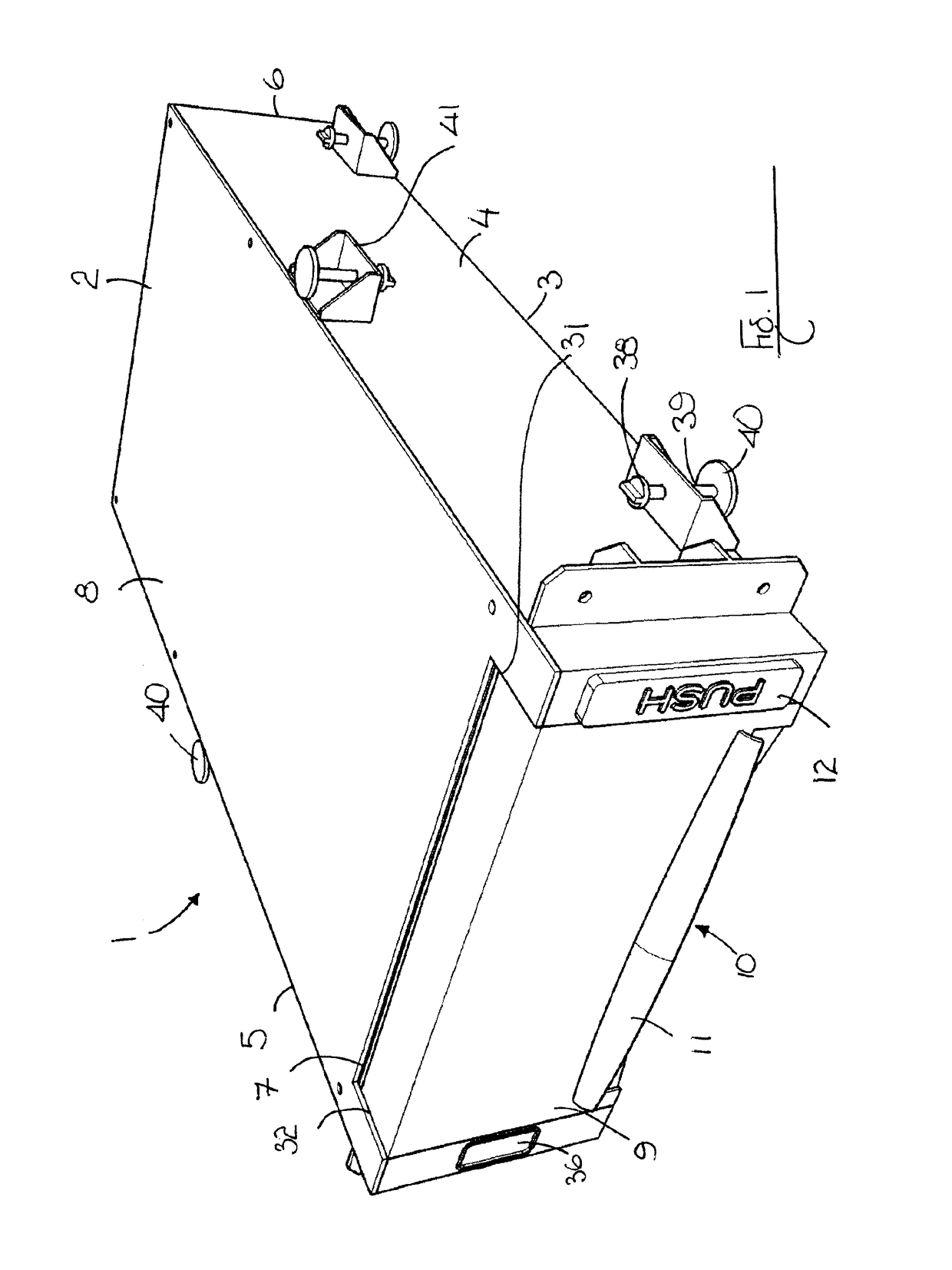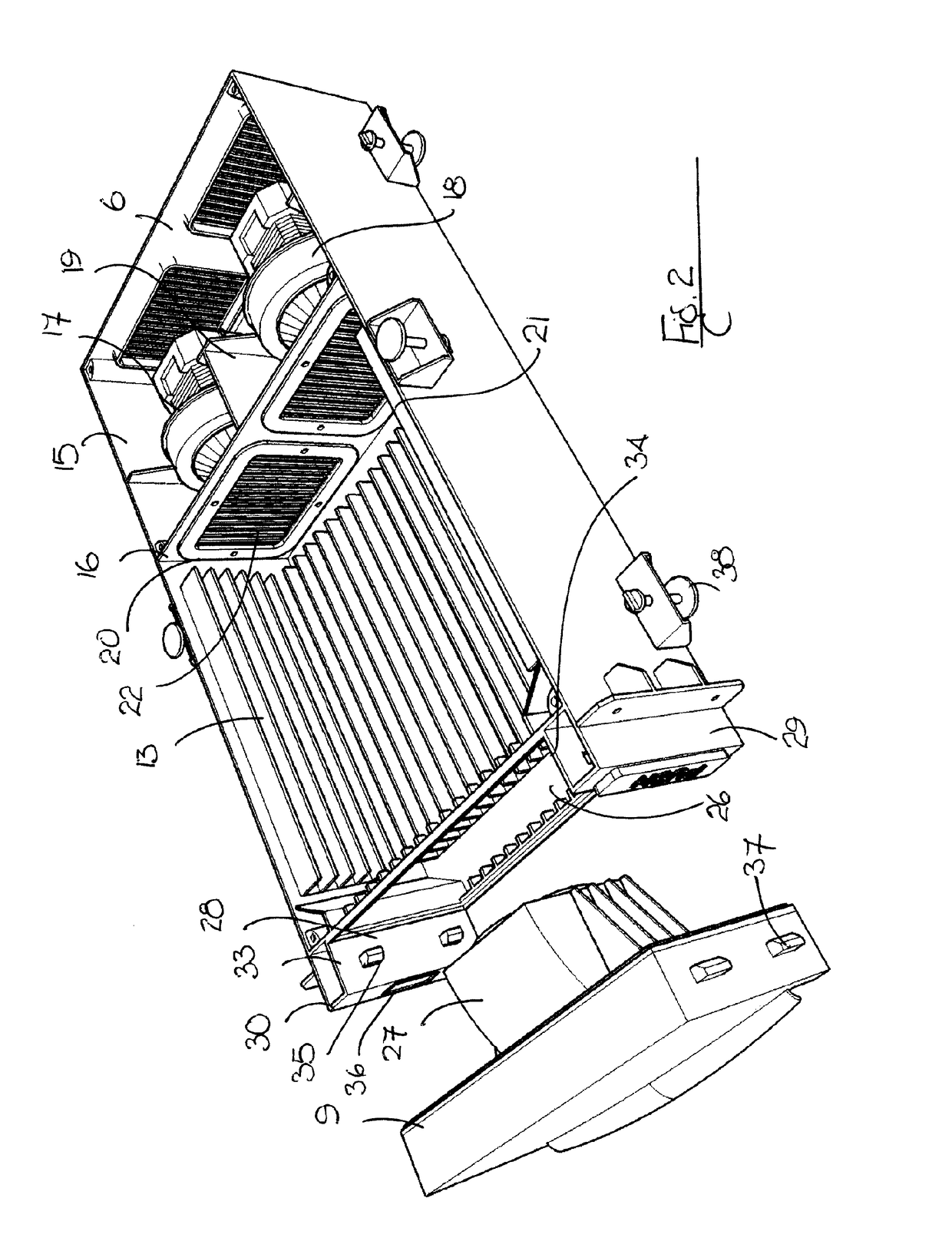Vacuum apparatus
a vacuum apparatus and vacuum technology, applied in the field of vacuum apparatus, can solve the problems of difficult to remove dust, debris and dirt from floors, elderly people and the disabled can encounter difficulties in bending and sweeping, and large quantities of debris can accumulate, so as to achieve convenient, effective, and convenient removal of dirt and dust.
- Summary
- Abstract
- Description
- Claims
- Application Information
AI Technical Summary
Benefits of technology
Problems solved by technology
Method used
Image
Examples
first embodiment
[0063]FIGS. 1 to 5 show a low-profile and compact self-contained or standalone vacuum apparatus of the invention generally indicated by the reference numeral 1 suitable for installation at floor-level so that dirt urged towards the vacuum apparatus can be sucked into and stored by the vacuum apparatus. In the following description, reference is made to a domestic installation and use of the vacuum apparatus. However, as indicated above, the vacuum apparatus of the invention is suitable for use in domestic, commercial and industrial environments. Moreover, the vacuum apparatus of the invention can be specifically adapted for use in such environments if desired.
[0064]As shown in FIGS. 1 to 5, the self-contained vacuum apparatus 1 is made up of an external shell or housing 2 having a bottom wall 3, first and second side walls 4,5 respectively upstanding from the bottom wall 3 and front and rear walls 6,7 respectively also upstanding from the bottom wall 3. The housing 2 is fitted with ...
second embodiment
[0077]FIGS. 6 to 15 show the self-contained vacuum apparatus 1 of the invention in which the vacuum apparatus 1 is provided with a single suction motor 17 in place of the twin suction motors 17,18 and a single air outlet aperture 23 in place of the pair of air outlet apertures 23,24 of FIGS. 1 to 5. Moreover, as shall be explained more fully below, in the present embodiment, the single air outlet aperture 23 is off-set with respect to the air inlet aperture 10 i.e. are not located on a single axis as shown in FIGS. 1 to 5 so that that the vacuum apparatus 1 vents air through the air outlet aperture 23 from its side. Like numerals indicate like parts.
[0078]As shown in FIGS. 6 to 15, the self-contained vacuum apparatus 1 is generally made up of a housing 2 having a removeable front head section 9 with an air inlet aperture 10 at floor or ground level, a storage cradle 13 in the housing 2 for holding a dustbag 14, a motor chamber 15 to the rear of the storage cradle for housing a singl...
PUM
 Login to View More
Login to View More Abstract
Description
Claims
Application Information
 Login to View More
Login to View More - R&D
- Intellectual Property
- Life Sciences
- Materials
- Tech Scout
- Unparalleled Data Quality
- Higher Quality Content
- 60% Fewer Hallucinations
Browse by: Latest US Patents, China's latest patents, Technical Efficacy Thesaurus, Application Domain, Technology Topic, Popular Technical Reports.
© 2025 PatSnap. All rights reserved.Legal|Privacy policy|Modern Slavery Act Transparency Statement|Sitemap|About US| Contact US: help@patsnap.com



